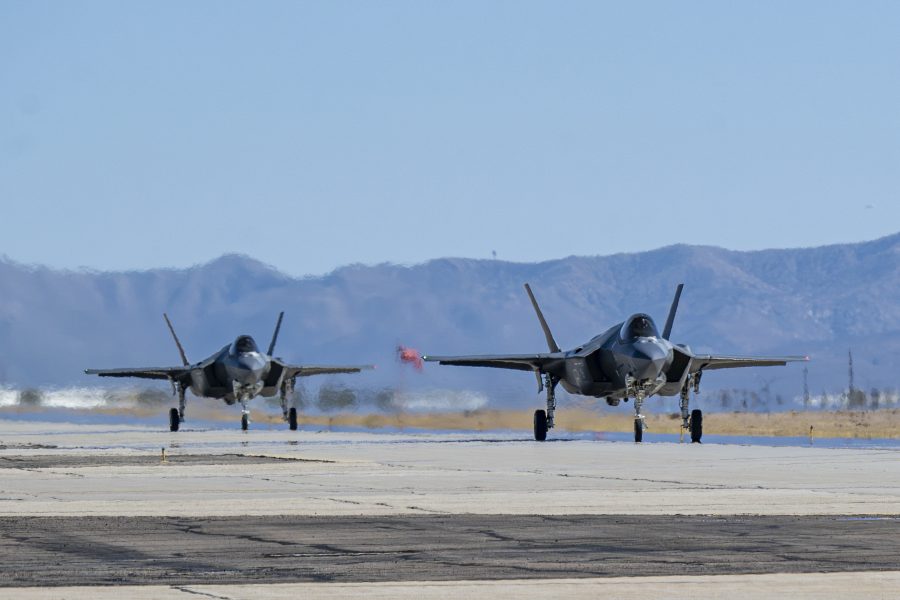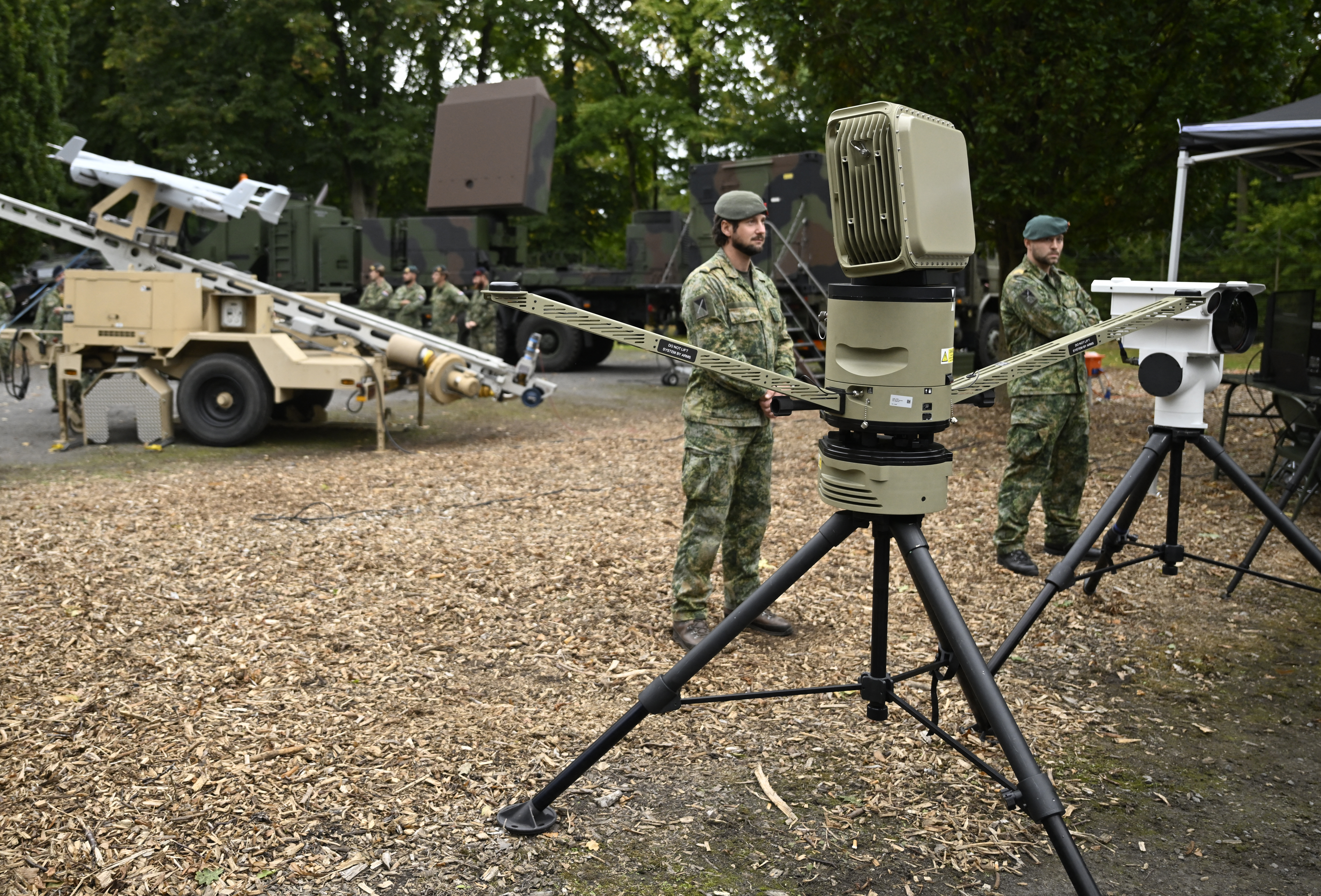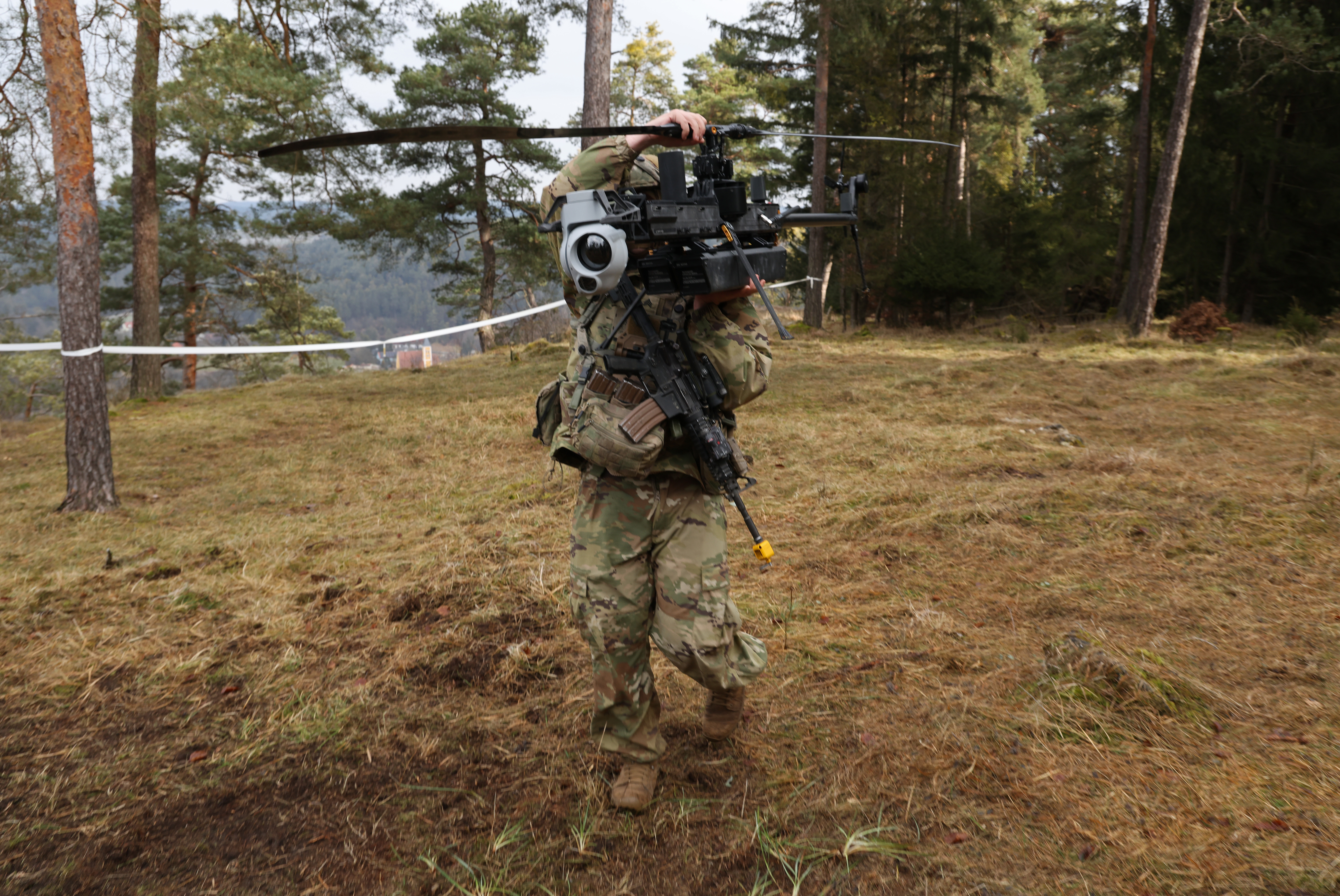
As futuristic aviation programs gain priority, the F-35—the only in-production, fifth-generation American fighter—is facing new headwinds. Fresh debate over its challenges and its potential in the coming months will shape its future role in the force.
The House’s $150 billion reconciliation package of defense add-ons contains $7.2 billion for cutting-edge tactical aviation accounts, including USAF’s new sixth-generation F-47 and its autonomous Collaborative Combat Aircraft (CCA), and largest of all, $3.15 billion for additional F-15EX fighters. Notably absent: even a single penny for the F-35.
“Think about it: It’s the largest acquisition program in DOD,” said Todd Harrison of the American Enterprise Institute. “Congress gets an extra $150 billion, and they don’t put any of it toward that program? That says something about the sentiment around the F-35.”
Asked for comment, a spokesperson for F-35 prime contractor Lockheed Martin said only that: “We appreciate the additional investment in national defense that Congress is considering through the budget reconciliation process, as well as the strong and continued support for the F-35 program.”
As Congress put the final touches on the reconciliation package in April, the F-35 Joint Program Office (JPO) released an unasked-for explainer in defense of estimated lifetime program costs that have swelled to $2.1 trillion. The estimate includes the cost of 2,456 aircraft for the Air Force, Navy and Marine Corps, plus operations, sustainment, upgrades, military construction, personnel, and inflation over 94 years. Fully half the estimate is inflation, the JPO said. This calculus is unique; F-35 is the first major defense program required to predict all those future costs.
A JPO spokesperson said Program Executive Officer Lt. Gen. Michael Schmidt “wanted to provide a breakdown of costs and … context directly from the program.” To date, the F-35 program has delivered nearly 1,200 aircraft to the three U.S. branches and foreign allies and partners; of these, the Air Force has more than 450 jets, or about a quarter of its planned 1,763.
Chronic Irritants
With a sprawling supply chain and shifting annual buys, it’s not surprising that the F-35 is in constant flux, or that Congress is impatient.
From mid-2023 to mid-2024, the government wouldn’t accept delivery of F-35s until new processors, software and displays, included with the Tech Refresh 3 upgrade had been fully tested. Then Schmidt cleared deliveries to resume last summer, even though TR-3 testing was still underway, saying the software was safe for flight and required less in-flight reboots.
Overall procurement costs per jet are low, but costs per flying hour have remained stubbornly high across all variants. That’s led the Air Force and Navy to fly their F-35s much less—19 percent less for the Air Force and 45 percent less for the Navy—over the life of the program. They intend for pilots to make up for lost flying time in simulators.
It took until 2024 for the Pentagon to declare initial development complete, 23 years after the program got underway. Achieving “Milestone C” cleared the F-35 for full-rate production, but production has essentially been at full-rate capacity for several years. The last few years of delay in achieving Milestone C were pegged to challenges integrating the F-35 into the Joint Simulation Environment.
No Deal Yet
One ongoing hangup is that the JPO and its suppliers have not settled the details for the next two lots of F-35 production. Negotiations on Lots 18 and 19 dragged on nearly three years before Lockheed and the JPO reached a “handshake agreement” on the price last November, but the two parties have yet to achieve a “definitized” contract that spells out unit costs.
Inflation, supply chain, and labor cost issues dating back to the COVID-19 pandemic have often been cited for the extended bargaining, but more recently tariffs imposed by President Donald J. Trump have added additional concerns. The JPO declined comment on how tariffs could affect costs for imported raw materials and parts, referring questions to the State Department, which did not respond to calls and emails. The F-35 is globally sourced, with production contracts spread among dozens of countries, most of which are developmental partners or customers for the aircraft.
“The tariff situation changes almost by the day, if not the hour,” said one industry source. “How do you plan in this environment?”
Chauncey McIntosh, Lockheed’s F-35 chief, told Air & Space Forces Magazine in March that “working with our supply base, we’ve really been able to keep the price of the airplane under that inflation curve [despite] inflation.”
The last negotiated unit cost for the F-35A—the Air Force’s conventional takeoff and landing variant—was about $85 million per airframe. Pratt & Whitney’s F135 powerplant—which is purchased separately and arrives at Lockheed’s factory as government-furnished equipment—is believed to cost about $15 million per engine. The engine cost, which Pratt says is proprietary, is the sticking point. Industry sources said negotiations could drag into late summer or fall.
Lockheed officials say Lot 18 and later jets are more capable and will cost more, which could push the unit price of the F-35 over the $100 million mark.
Once Lots 18 and 19 are finalized, multiyear contracting can begin with Lot 20 and beyond. Lockheed Chief Financial Officer Evan Scott said in May the two lots now under negotiation could be combined into a single contract.
Mixed Messages from the White House
The White House could be a wildcard for the F-35 program. Elon Musk has posted derogatory remarks on “X,” his social media site, calling the F-35 obsolete and a “jack-of-all-trades, master of none.” He champions autonomous, uncrewed aircraft, even as the Air Force sees such equipment as complementary, rather than replacing the Lightning II.
Trump, on the other hand, has praised the F-35 as the “greatest fighter jet in the world,” touting its stealth as “almost … invisible,” while acknowledging that it is “more expensive than we expected it to be.”
He has also expressed misgivings about the international nature of F-35 production. “We have the wings built in one country, we have the tail rudders built in another country, we have the seats built in another country, we have the electronics built in seven countries,” he said in September 2024. “What the hell would we do if there’s a war, and we’ll end up fighting half those countries?”
Trump promised instead, that “we will require all essential materials for our national security to be produced here in the United States,” which he said would create “millions and millions of manufacturing jobs.”
Secretary of Defense Pete Hegseth ordered the Pentagon to find 8 percent savings annually for five years, and provided a list of priority programs and activities excluded from the cuts. Those included CCAs, munitions and shipbuilding, but made no mention the F-35.
A ‘Ferrari’ F-35
Meanwhile, Lockheed is still smarting from losing the competition to build the Next-Generation Air Dominance fighter now known as the F-47. Boeing won that deal in March. Lockheed has also been eliminated from the competition to build the Navy’s NGAD counterpart, the F/A-XX, and it lost out to Anduril Industries and General Atomics on the Air Force’s CCA program.
Now Lockheed is touting a proposal to soup up the F-35 as either a cost-saving complement or alternative to the F-47.
Company CEO Jim Taiclet told analysts on an earnings call that the technologies Lockheed developed for NGAD can be applied “fairly quickly” to the F-35, creating a “supercharged … fifth-generation-plus” fighter.
“I feel that we can have 80 percent” of the NGAD capability “potentially, at 50 percent of the cost-per-unit,” Taiclet said, “by taking the F-35 chassis and applying numerous advanced technologies, some of which are already in process” as part of the Block 4 upgrade.
“There will be 3,500 of those chassis out there, at various stages of technology and capability,” he added, including both U.S. and partner fleets, and “we can get most of the way to sixth-gen” with them.
If F-47 is to cost some $300 million per copy—an estimate offered by former Air Force Secretary Frank Kendall—Taiclet’s “Ferrari” version of the F-35 could be had for perhaps $150 million per copy.
Many of the technologies that could be applied to an uprated F-35 have already been paid for, Taiclet said, both through government and Lockheed’s own investment. Taiclet described passive infrared sensing and long-range missiles, but otherwise didn’t elaborate on specifics. He said it would employ “key techniques and approaches that [the] fighter pilot needs to have to be competitive and win,” he said.
The JPO had no comment on the proposal, which it called “notional.”
The Bird in Hand
Mark Gunzinger, director of future concepts and capability assessments at AFA’s Mitchell Institute for Aerospace Studies, called the exclusion of extra funds for F-35 in the reconciliation package “very, very worrisome.” Neglecting the F-35 “does not make sense,” he said, given that the Tech Refresh 3 jets are “rolling off the line” now, and “the software is almost there, as well.”
The F-15EX has a useful role to play as a munition truck and a platform for hypersonic missiles, he said, and USAF should “buy them as fast as we can,” they should not be prioritized over the F-35.
“Given the requirement” for a stealthy, penetrating, stand-in fighter and the long development pipeline to fully prove out F-47 and CCAs, “pushing F-35 buys to the right” is the wrong approach, Gunzinger said.
“They are in production. They’re what we can buy now,” he said. “They … enhance deterrence [and] create a much more capable force.”
The post What Might the Future Hold for the F-35? appeared first on Air & Space Forces Magazine.

Air, National Security, 300 million per copy, Air Force, Anduril Industries, Block 4 upgrade, CCA, CFO Evan Scott, Chauncey McIntosh, defense, Defense Secretary Pete Hegseth, Elon Musk, F-35, F-47, F/A-XX, Ferrari F-35, fifth-gen, General Atomics, jack-of-all-trades, Jim Taiclet, JPO, JSE, Lockheed Martin, Lt. Gen. Michael Schmidt, Mark Gunzinger, Milestone C, military, NGAD, Pratt & Whitney, Production Lots 18 and 19, reconciliation package, Todd Harrison CSIS, TR-3
Air & Space Forces Magazine
[crypto-donation-box type=”tabular” show-coin=”all”]






